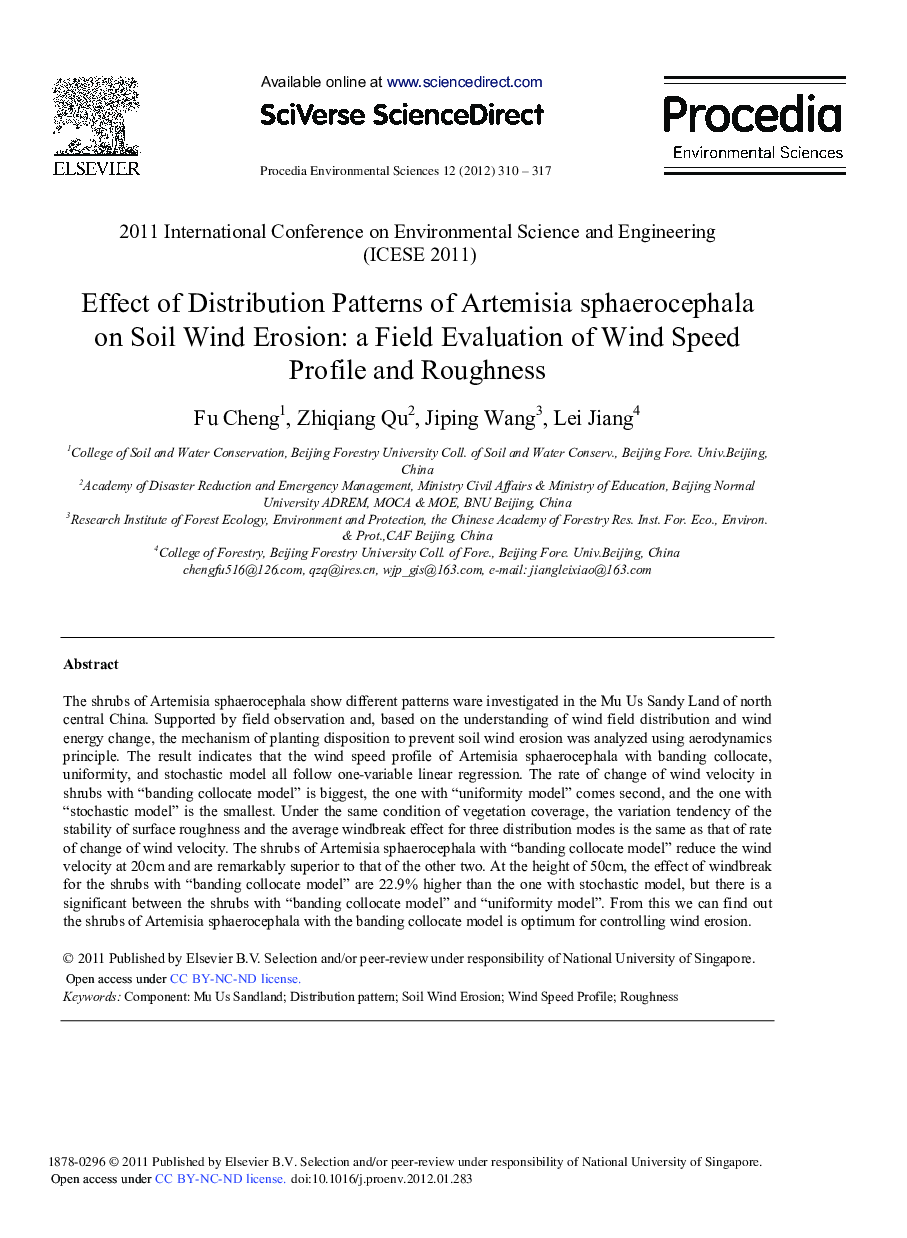| Article ID | Journal | Published Year | Pages | File Type |
|---|---|---|---|---|
| 4403165 | Procedia Environmental Sciences | 2012 | 8 Pages |
The shrubs of Artemisia sphaerocephala show different patterns ware investigated in the Mu Us Sandy Land of north central China. Supported by field observation and, based on the understanding of wind field distribution and wind energy change, the mechanism of planting disposition to prevent soil wind erosion was analyzed using aerodynamics principle. The result indicates that the wind speed profile of Artemisia sphaerocephala with banding collocate, uniformity, and stochastic model all follow one-variable linear regression. The rate of change of wind velocity in shrubs with “banding collocate model” is biggest, the one with “uniformity model” comes second, and the one with “stochastic model” is the smallest. Under the same condition of vegetation coverage, the variation tendency of the stability of surface roughness and the average windbreak effect for three distribution modes is the same as that of rate of change of wind velocity. The shrubs of Artemisia sphaerocephala with “banding collocate model” reduce the wind velocity at 20 cm and are remarkably superior to that of the other two. At the height of 50 cm, the effect of windbreak for the shrubs with “banding collocate model” are 22.9% higher than the one with stochastic model, but there is a significant between the shrubs with “banding collocate model” and “uniformity model”. From this we can find out the shrubs of Artemisia sphaerocephala with the banding collocate model is optimum for controlling wind erosion.
